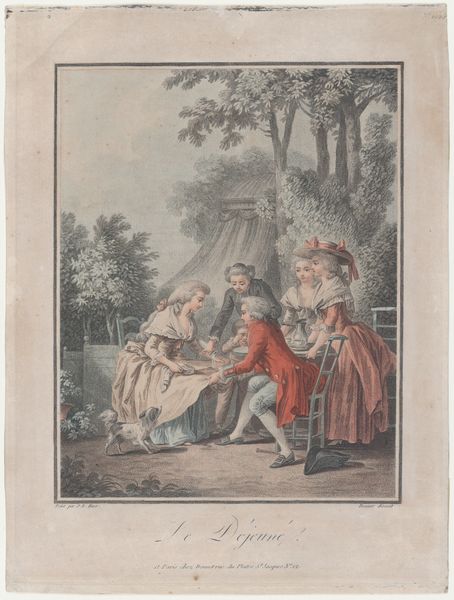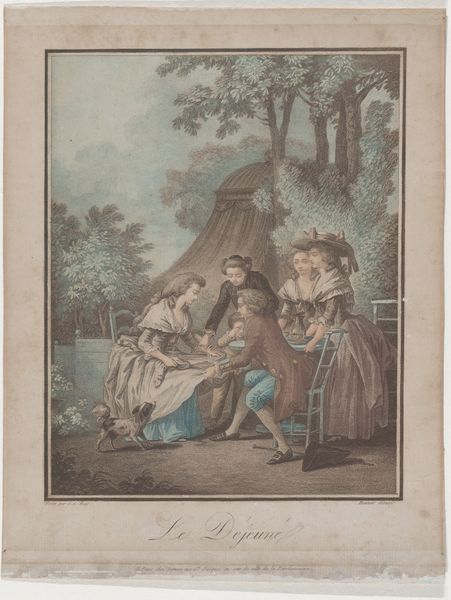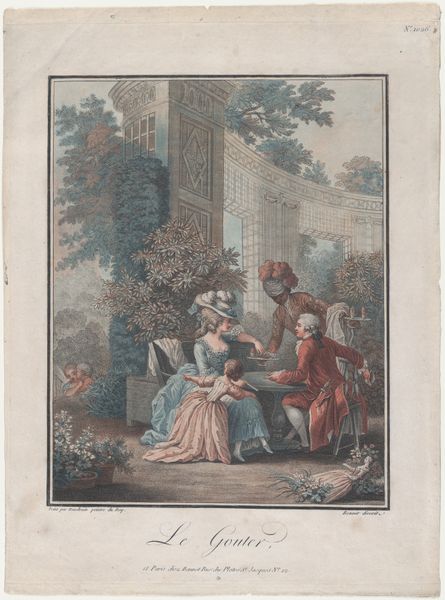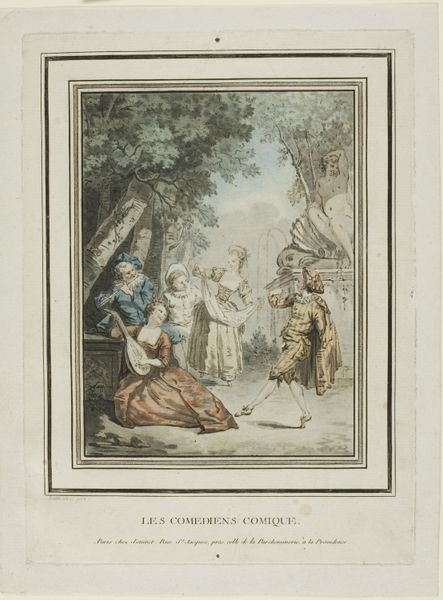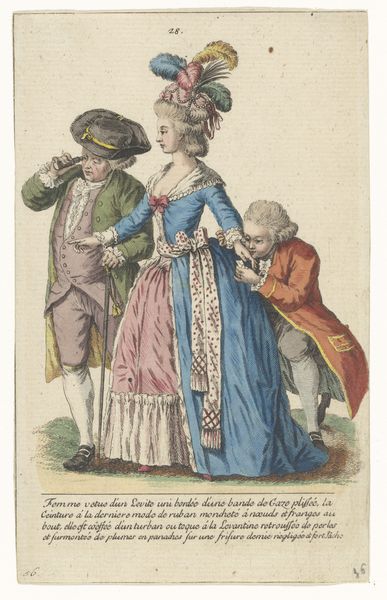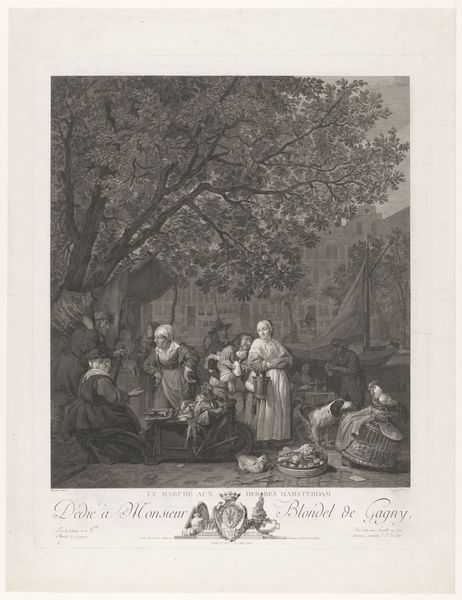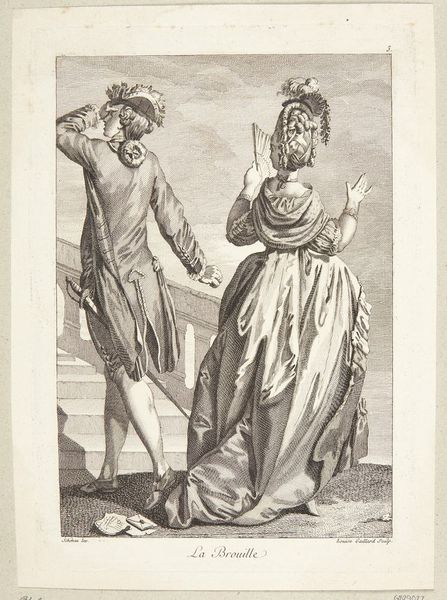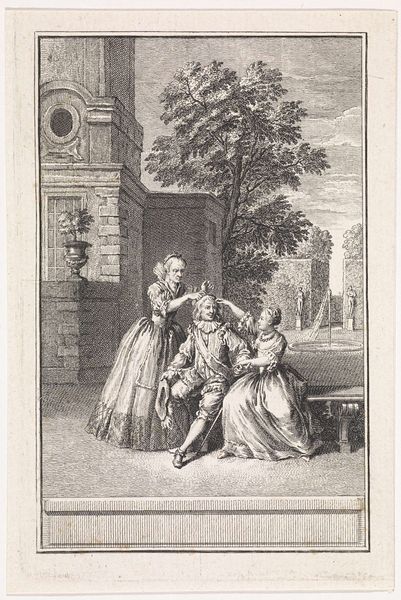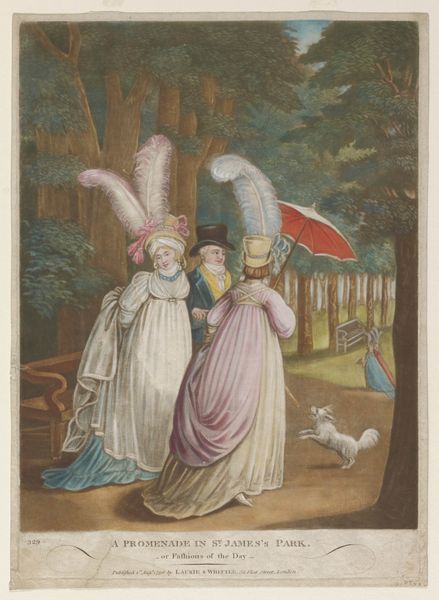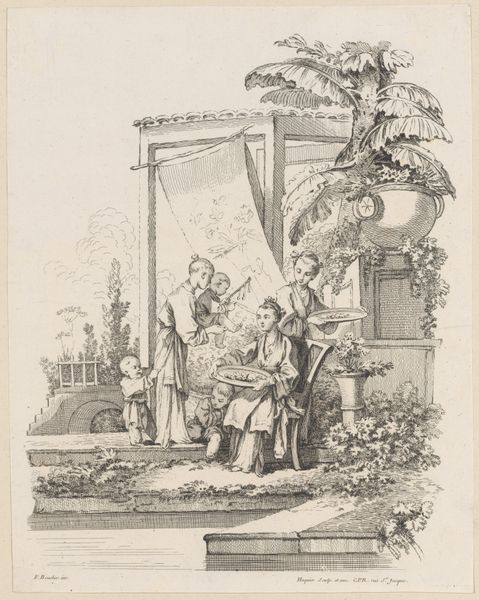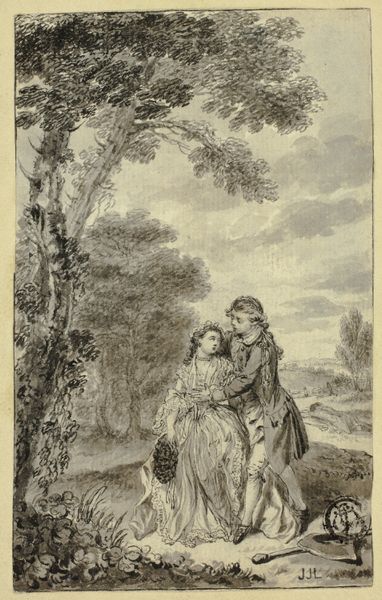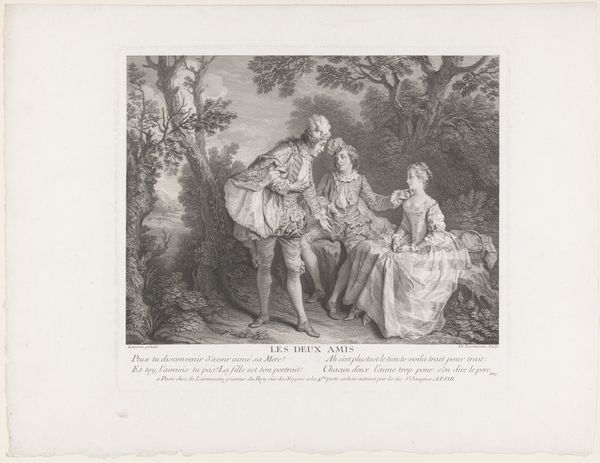
To galante par i en have, det ene liggende, det andet stående 1737 - 1807
0:00
0:00
Dimensions: 136 mm (height) x 99 mm (width) (bladmaal)
Curator: I find myself drawn to the delicate, almost ethereal quality of this artwork. We're looking at a piece titled "To galante par i en have, det ene liggende, det andet stående," attributed to Niclas Lavreince. Created sometime between 1737 and 1807, this drawing employs watercolor and gouache to depict a genre scene. Editor: The composition immediately evokes a sense of clandestine rendezvous. The pastel hues, particularly the soft blues and pinks, suggest a hidden romance. What strikes you as most significant about its socio-historical backdrop? Curator: The era, of course, is critical. It falls squarely within the Romantic period. Lavreince often captured these private moments of intimacy, playing with the burgeoning ideals of sensibility and emotion among the privileged classes. But these idylls mask so much social artifice and precarious gender politics, too. Editor: I see how the artist has positioned symbolic elements: the crumbling garden urn suggests the transient nature of beauty and pleasure. And those extravagant feathered hats! What are they telegraphing? Curator: Exactly! Consider that attire: signifiers of wealth and status that underscore the artifice, the performance of romance within very restrictive social boundaries. The reclining figure almost seems burdened by their finery. Editor: The very bodies seem to whisper of secrets untold. There is a theatricality here—every gesture and glance, like stagecraft. One has to ask how women are constrained within such theatrical roles and settings. Curator: Precisely, which reminds us of the gaze, and how art in this time served to codify gender roles as much as challenge them. Even while Lavreince appears to offer a glimpse into private lives, he also reaffirms public expectations. It's a tightrope walk. Editor: In examining such works, we gain a better lens on how our cultural ancestors perceived and portrayed interpersonal dynamics, particularly those linked to class, gender, and hidden desires. Curator: Indeed. Exploring Lavreince allows a dialogue about the nuanced dance between image and ideology. A look back that propels us forward.
Comments
No comments
Be the first to comment and join the conversation on the ultimate creative platform.
